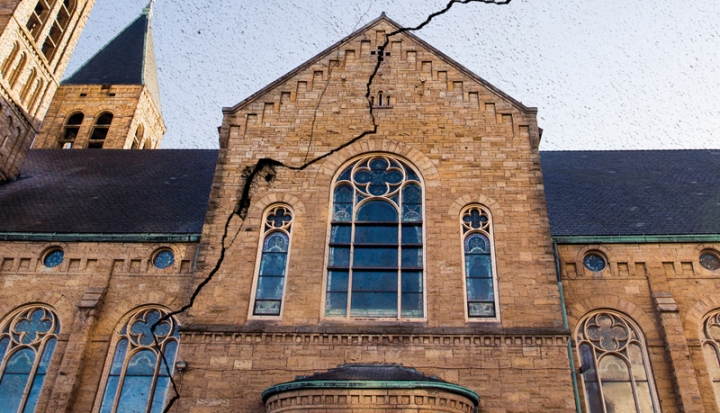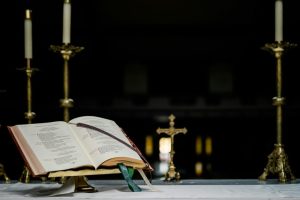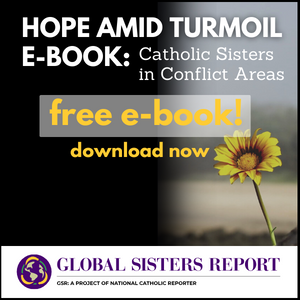I recently attended a symposium on the work of biblical scholar Raymond E. Brown (1928–1998). Brown was among the most important scripture scholars of the 20th century, a Sulpician priest who taught for many years at the independent Union Theological Seminary in New York. His towering work sheds new light on our understanding of the Gospel of John, especially on how the early church understood Jesus. Brown was also a champion of ecumenical and interreligious dialogue.
A new biography of Brown is available from Paulist Press, Raymond E. Brown and the Catholic Biblical Renewal by Passionist Father Donald Senior. Offering remarks about Brown at the symposium, Senior drove an important point home about Brown’s work. Brown told an interviewer once, “I’ve never really been interested in scholarship that doesn’t have some significance for the church. . . . Pure scholarship, my mind responds to, but I really keep asking myself, what is this going to do?”
As a political theorist I am haunted by that same question. Political theory, as it sounds, is concerned with the most practical things in life. At some point, every theorist must ask Brown’s question: What is this going to do? But my current faculty appointment is not in politics: Today I teach public theology, a new discipline among Catholics (and only slightly less new among Protestants).
Public theology refers to presenting the message of Christianity in public spaces that include nonbelievers. Think of Paul’s preaching at the Areopagus (Acts 17:22–34), where nonbelievers were his primary audience, and they were a little hostile. (“When they heard of the resurrection of the dead, some scoffed,” says the author of Acts.) For Catholics in our time, presenting what we believe about abortion or economic justice in American politics are typical examples of public theology.
Public theology encompasses any presentation of the faith and, like Paul, might even include presenting the good news of the resurrection. One of its more revealing characteristics is the way in which it discloses how our whole faith is connected, from the resurrection to the dignity of the person, every piece part of the same seamless whole. This serves as a prompt answer to Brown’s question.
The day before that symposium, in an essay titled “The American Catholic Schism,” blogger Dwight Longenecker described “two different groups,” “two churches” in the United States. One group, Father Longenecker says, is composed of “Catholics who believe the Catholic Church is here to change the world. They believe it is our primary mission to help the immigrants, feed the hungry, be activists in worthy causes, raise money for the poor and be engaged in corporal works of mercy.” The other group believes “the Catholic Church is here to save souls.”
These two groups, he writes, are not susceptible to an easy division into liberal and conservative Catholics. The division is deeper: a schism. The first group, Father Longenecker tells us, is “not a religion at all. It’s a manifesto, it’s a rule book. It’s an agenda and it is therefore an ideology.”
This is more interesting than it may sound.
Father Longenecker says, “I am not opposed to the corporal works of mercy. . . . But they are the result of the saving work of Christ in the world. They are the consequence of our faith.” In this way, Father Longenecker seems to be trying to answer Father Brown’s question about the nature of what we believe: What is this going to do? He is making an argument about connecting our faith to our works, at least in his second group.
Personally, I am drawn to the idea that we can dissolve the differences between Catholics when we focus our attention on the core essentials of what we believe and when we see our good works as a practical application of God’s saving love for humanity. That is the work done by the Catholic Common Ground Initiative, part of the Bernardin Center launched in 1996 by another priest in the same South Carolina diocese as Longenecker. Cardinal Joseph Bernardin shared this way of seeing the consistency of our faith applied in concrete action.
Yet Cardinal Bernardin discouraged us from presuming to know the minds, hearts, and consciences of those Catholics Longenecker has assigned to his first group. We might want to ask Brown’s question: What is this going to do?
We know from too much experience in our church, the answer is almost certainly nothing good. We owe good faith to one another, and we ought to give our fellow believers the benefit of the doubt. If we presume to know why socially committed Catholics are socially committed, we identify an ecclesial “them” that we find on some other side of an argument.
I do know that good works are a proof of faith (James 2:18), and I know that I cannot pass judgment on another master’s servant (Rom. 14:4). Moreover, drawing divisions in this way only breeds divisions. Our energy is better spent when we search out the inner unity among seemingly different or opposed people inside the church (and outside it, too). We should not paper over important differences or simply try to get along despite serious problems. But we can choose to begin in good faith and assume good motives, acknowledging differences while seeking common ground where dialogue about those differences can begin.
I return to the Gospel of John, about which we learned so much from Brown. John is the most literary and the most philosophical of all the gospels, with a richness of symbols that begins with its opening poem, the Johannine Hymn. John presents to us the least human Jesus, in a sense, one who seems to be more identified with his divine nature. Yet he is the same Jesus we find in the synoptic gospels. Brown concludes that John offers us valuable historical insights about Jesus’ life and, even if it seems more abstract, John is no less necessary than any other gospel.
Jesus of Nazareth was seen and understood differently by the people who knew him and wrote about him, yet he remains one person. Brown challenges us to see past those differences and to find what remains that is true, the unity among the gospels behind the differences we perceive. This is the challenging both/and we encounter so often in our Christian lives: divine and human, faith and works. Our instinct quite often is to draw distinctions, to categorize and separate. This is a peculiar habit among those who believe in the message of a savior who will draw all things to himself (John 12:32). It is a habit our faith tells us we should not indulge so much.
It will not do any good.
This article also appears in the June 2019 issue of U.S. Catholic (Vo. 84, No. 6, pages 26–27).















Add comment